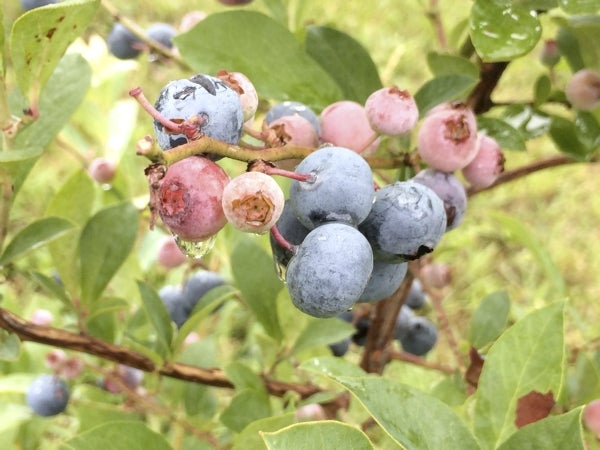Blueberries are beautiful shrubs, too
Published 12:00 am Friday, January 20, 2017

- Submitted photo The colors of the blueberries are a great addition to the landscape.
By Amy-Lynn Albertson
Rowan County Extension Director
Not only are blueberries an excellent source of vitamin C and antioxidants, they also make beautiful shrubs to accent your landscape and attract wildlife.
Blueberries are typically used in the landscape as hedges for screening purposes, but they can also be used in cluster plantings, or as single specimen plants.
Blueberries are an ideal year-round addition to the landscape. They have delicate white or pink flowers in the spring, the summer fruit has an attractive sky blue color, and the fall foliage adds great red and yellow colors to the landscape.
In addition, blueberry plants lend themselves to the organic approach of gardening, because pesticides are rarely needed in home garden plantings.
Blueberries come into season in late June and July in the Piedmont. The rabbiteye species of blueberry (Vaccinium ashei) grows best in our area.
Blueberries require a lower pH than many other small fruit crops. Before planting, take a soil test. Apply wettable sulfur (90 percent S) if pH is above 5.3 for rabbiteye blueberries.
Ideally we want a pH of about 4.8. Blueberry plants will survive in soils with a higher pH, but they won’t thrive. Blueberry plants also require excellent soil drainage. If drainage is known to be an issue in your landscape, you may want to look at raised beds for your blueberry plants.
Although the rabbiteye blueberries are drought- and heat-resistant, they still need irrigation during the first year of establishment.
Some varieties of rabbiteye blueberries recommended for our area include: Tifblue, Powderblue, Premier and Climax. Plant two different varieties of rabbiteye blueberries to make sure you have good cross pollination and fruit production.
Blueberries are easily damaged by too much nitrogen, so follow the soil report recommendations. This is important, because I have killed my fair share of blueberries with fertilizer and love.
Organic material such as bark, wood chips, sawdust or pine straw as a 3- to 4-inch layer of mulch on the surface after planting results in more uniform soil moisture, reduces soil temperature and generally promotes better bush growth and survival.
Pine bark, chips or sawdust have a pH of 3.5 to 4.5 and are more desirable than the same mulches from hardwood with an associated pH above 5.0. Avoid sticky hardwood sawdust that will “seal” the bed and prevent water infiltration.
With good care, a mature rabbiteye blueberry bush can yield an average 10 pounds of fruit per bush. Rabbiteyes have been known to yield as much as 25 pounds per bush. If you take the right steps and preparation before planting your blueberry bushes, they can live for 20-plus years.
The Rowan 4-H program is having its annual plant sale. Blueberries are one of several small fruits available for sale.
If you are just looking for ornamental appeal and a few novelty fruits, check out the variety Pink Lemonade. It has pink berries that are as tasty as they look. We will also have TifBlue, Climax and Premier.
The plants are in one-gallon pots and cost $10 per plant. The sale is pre-order only, and payment is expected the day of pick up.
The deadline to order is Thursday, Feb. 23, and pick up will be March 2, at the Rowan County Extension Center.
We also have a variety of raspberries, blackberries, muscadine grapes and figs for sale. Go to our website, rowan.ces.ncsu.edu , to find the online order form or call 704-216-8970.




